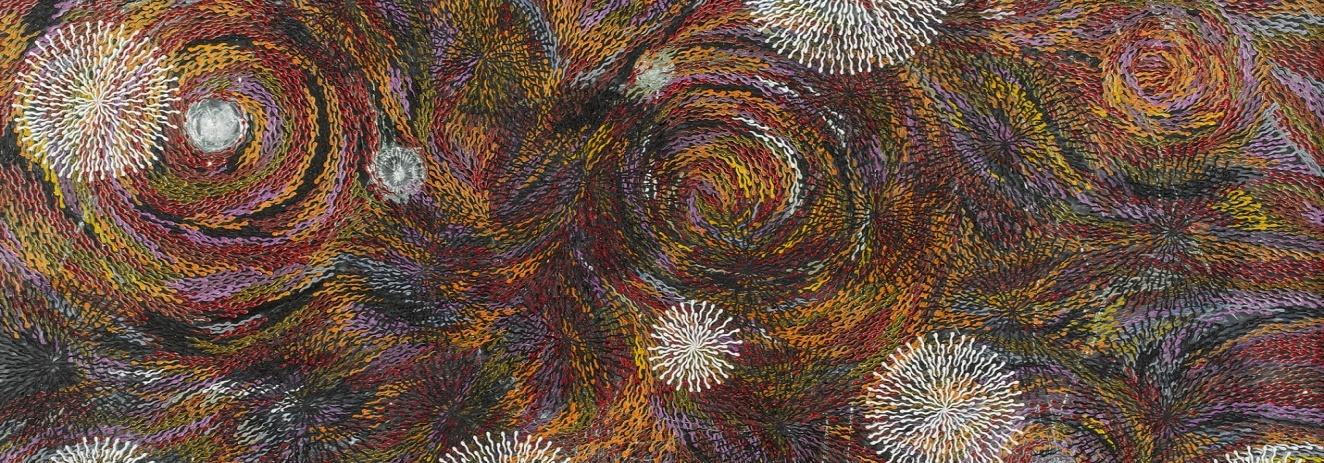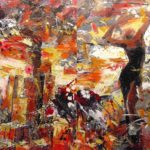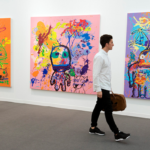After Independence, when India was absolutely under-developed and trying to emerge from the ashes and recover from the mar the British had given to us Indians, it is politics that had a foremost influence on every issue, right in the beginning. Authors and poets were busy setting up their lifestyle proving their mettle. Everything was settling down slowly except art and culture which was the symbol of Indian cultural tradition which was oozing from every possible little crack like a boss. The western culture was trying to enter into our country. In the 1930s and 1940s, various theatre professionals and writers showed their presence in Bombay.

Modern and contemporary art – An introduction
All credit goes to Abanindranath Tagore who very brilliantly took initiative through “the Bengal school” for the contemporary art movement.It is known to be the notable work by many and it actually gave a very big leap to the Indian art. But he was not at alone to do everything as he was supported by Gaganendranath Tagore, Nandalal Bose, Benodebehari Mukherjee, Mukul Dey and Asit Haldar. He was followed by many followers which led to an emerging effect.

Abanindranath Tagore: The creator of “Indian society of Oriental Art
The then time centers regarding art and culture were only in Calcutta and in Shantiniketan but it had a very good and very powerful effect on the art schools of the other sub-continent Nationalism and Patriotism were on their ace but the quest for an identity to be portrayed for India was also at its best. The Bengal school gave a great contribution in composing India’s traditional art along with nationalism. Amrita Sher Gil should be very well thanked for the favor given to revivalists’ artists for being sentimental romantic naturalism. The modernism in Indian art culture was the result of the Calcutta group and also the Bombay Progressives.

Bengal school of art expressing modernism
Kajal Sengupta can be quoted to support the concept, “Whatever may be the political sentiment growing around the movement, it was necessary at that juncture, to restore the artistic self-respect of a nation trodden down to servility.” Rules and regulations in the schools were preventing the pupils to get involved in the Indian culture. Their disciplines mannerism was compelling to make a presence in the events organized in “Western academicism”. All this used to promote Modern art movements a lot. The modern art culture appertained to Europe. Some of the teachers involved in government art colleges anyhow have efforts to make them cross their confined boundaries and to have a look beyond the programs which used to be very fixed and complicated. Students belonging to new generation were benefitted a lot by their constant and positive effort.
During these days an introduction of new dynamism was done in scenery by Amrita Sher Gil. All this happened simultaneously. The artist was known for her strong influence and very emotional response to many aspects. One of her composition “The life of village India,” synthesized various styles of India and Post impression. She was responsible for the provision of a rich variety of content belonging to the immediate environment to different Indian artist. She also taught them painterly values in art.
Every movement has pros and cons. This movement also went through negative phases. Many artists revolted and became violent. All that happened in 1943 when they became anti-social. That was not just a person but group of artists. It includes Paritosh sen, Rathin Maitra, Sunil Madhav Sen, Gopal Ghosh, Subho Tagore, Nirode Majumdar and others. Sundaram Tagore’s statement beautifully expresses the situation,”Among Indian artists the first to respond in unison to international modernists values was the Calcutta group….They attempted to launch an art of change –anti-nostalgic, anti-sentimental subversive of hierarchies.”
The consequence of this was the separation of The Calcutta group in 1953. All the artists went Paris and joined the artists Eldorado
Formation of another group named as “The Progressive Artist’s Group” was a major revolution. Its creation was the result of combined efforts of artists F.N.Souza, Ara, Baker, Gade, M.F.Hussain and S.h.Raza and many more founders. This took place in Bombay. They were desired to hide up the “colonial academic art” and the nationalist revival of the Bengal school. The reason being their quest for the perfect platform to express their original version in modernity. For this purpose only they started focusing on the contemporary international art scene. The reason supporting all was exploratory exposure which they thought would work but it actually worked.

M. F. Hussain – The legend
Many artists lost their singular influence on the total art scene. They could not retain their public image and that was the reason they could not maintain the neutrality level of the then culture. The artistic presence was seen through symbols, theme, quotation, calligraphy, and color.
Bombay became the cosmopolitan hub of India on account of availability of various artists. They were K.K.Hebbar, Tyeb Mehta, Akbar Padamsee, Sudhir Patwardhan, Jehangir Sabavaia, N.S.Bendre, Atul Dodiya, and Jaideep Mehrotra. N.S.Bendre was very creative and active that he created an another group titled “The Baroda group of Artists”. It included legends such as Bhupen Khakkar, Gulam M.Sheikh, Ratan Parimoo, Rekha Rodwittiya, Jyotsana Bhatt and Vivan Sundaram. This group was the mild stone for the formation of the Fine arts in Baroda University and it led to the foundation of its faculty as well.
This all led to set up of many art institutions in India. Premier art institution was set up I southern states
Renowned Bengal actor was a faculty as well as the advisor to many institutes. The students were grateful to their superiors as they got an opportunity for routine visits and sketch scenes which they were asked to draw from the daily lives. All this belonged to Indian culture. They creatively and with full concern solved all the issues whether they were formal or informal.
And rightly so, as they say, art paves its way even when there isn’t. And everything can come to a standstill, but the mind of an artist.

The contemporary Ganesha – a story by M. F. Hussain



What do you think?